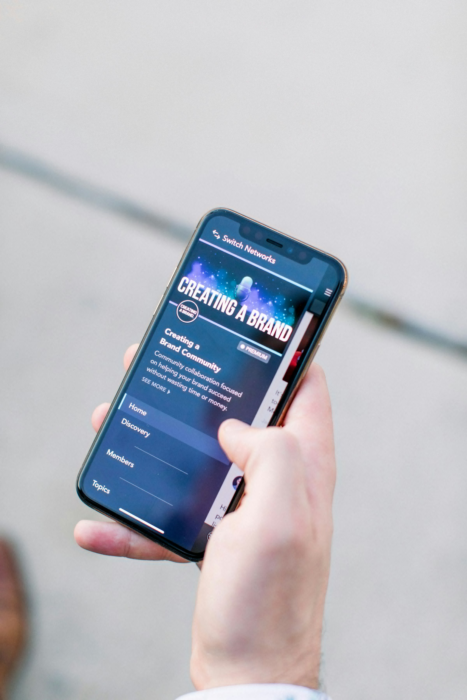Understanding the Target Audience
Millennials and Generation Z, commonly referred to as Gen Z, represent two of the most significant consumer demographics in today’s market. Understanding their characteristics, preferences, and behaviors is vital for developing effective marketing strategies that resonate with these groups. Millennials, generally defined as those born between 1981 and 1996, and Gen Z, who were born from 1997 to approximately 2012, exhibit distinct traits that shape their interactions with brands.
One notable preference among these generations is their inclination towards digital platforms. Both Millennials and Gen Z are digital natives, having grown up with the internet, social media, and mobile devices. This familiarity influences their purchasing decisions, as they often rely on online reviews, influencer endorsements, and social media interactions when considering products. A strong online presence and authentic engagement are essential for brands hoping to capture their attention.
Furthermore, social consciousness significantly impacts the values of these generations. They tend to support brands that align with their beliefs, particularly regarding sustainability, diversity, and social justice. Brands that operate transparently and showcase their commitment to ethical practices can build stronger relationships with these customers. Millennials and Gen Z appreciate authenticity and are more likely to engage with brands that reflect their own values.
Additionally, the purchasing behaviors of these generations often include a preference for experience over material goods. Many Millennials and Gen Z consumers favor spending on experiences, such as travel and entertainment, rather than traditional products. This underscores the necessity for brands to offer experiences that connect emotionally with their audience, fostering loyalty and encouraging repeat interactions.
In conclusion, recognizing the unique attributes of Millennials and Gen Z is essential for successful digital marketing. By understanding their digital habits, values, and purchasing behaviors, brands can tailor their strategies to effectively engage and resonate with these influential consumer groups.
The Importance of Brand Authenticity
In today’s rapidly evolving digital landscape, brand authenticity has emerged as a critical factor influencing the purchasing decisions of Millennials and Gen Z. These younger generations are increasingly drawn to brands that prioritize transparency and genuine communication, placing a high value on corporate honesty and integrity. Authenticity fosters trust, which drives consumer loyalty and engagement, essential components in a successful digital marketing strategy.
Transparency in branding refers to the open and candid sharing of information regarding a company’s practices, products, and values. Millennials and Gen Z are particularly adept at discerning genuine from inauthentic brands; they prefer companies that openly address their practices and support the value of honesty in their operations. For instance, brands like Patagonia have made their commitment to environmental sustainability clear through their transparent supply chains and eco-friendly initiatives, appealing directly to an audience that aligns with these values.
Another crucial aspect of brand authenticity is corporate social responsibility (CSR). Younger consumers are increasingly supportive of brands that actively contribute to social and environmental causes. Brands that engage in CSR not only showcase their commitment to positive change but also resonate with the values of Millennial and Gen Z consumers. For example, TOMS Shoes’ “One for One” campaign, which donates a pair of shoes for every pair sold, effectively combines purpose with profit, establishing emotional ties with its audience.
Furthermore, storytelling plays a vital role in creating emotional connections between brands and consumers. Brands that share relatable, authentic stories foster a sense of community and inspire connection. Nike, through its powerful narratives centered on athletes overcoming adversity, engages younger audiences and cements its position as a brand that celebrates resilience and achievement. Such storytelling enhances brand authenticity, making it a fundamental aspect of effective digital marketing.
Leveraging Social Media Platforms
Social media platforms play a pivotal role in connecting brands with Millennials and Gen Z. These generations are not just passive consumers; they actively seek out brands that resonate with their values and lifestyle. According to recent studies, platforms such as Instagram, TikTok, and Snapchat are particularly popular among these demographics, making them essential for effective digital marketing strategies.
Instagram, often regarded as a visually-driven platform, allows brands to showcase their personality through eye-catching images and videos. The introduction of features like Stories and Reels enables brands to create engaging, short-form content that captures attention quickly. To succeed on Instagram, brands should focus on creating aesthetically pleasing posts that reflect their identity, alongside authentic storytelling to engage users emotionally.
Similarly, TikTok has emerged as a powerful tool for reaching younger audiences. With over a billion active users, the platform thrives on creativity and spontaneity, which offers brands a significant opportunity to engage users through fun challenges and relatable content. Brands should consider collaborating with popular TikTok influencers to expand their reach organically and foster community engagement.
Snapchat, on the other hand, appeals primarily through its ephemeral content, which encourages real-time engagement. Brands can leverage Snapchat by crafting exclusive behind-the-scenes content or limited-time offers that drive urgency among followers. Utilizing user-generated content not only fosters authenticity but also encourages followers to engage and share their experiences, effectively strengthening community ties.
Finally, building an online community is essential for enhancing brand loyalty among Millennials and Gen Z. By encouraging open dialogues, actively responding to comments, and creating interactive polls or discussions across social platforms, brands can nurture a sense of belonging. Leveraging influencer collaborations and user-generated content strategically further enriches this community, creating an engaging narrative that resonates with the audience.
Creating Engaging Content
In the rapidly evolving landscape of digital marketing, capturing the attention of Millennials and Gen Z requires a strategic approach to content creation. These two demographics are primarily driven by their preference for visually appealing and interactive content. This emphasizes the importance of crafting engaging materials that not only resonate but also foster a connection with these audiences.
Visual content plays a pivotal role in grabbing the attention of Millennials and Gen Z. Formats such as videos, infographics, and eye-catching graphics are preferred as they reduce the cognitive load and convey information quickly. Platforms like TikTok, Instagram, and Snapchat thrive on short, impactful videos that can capture emotions and share stories. Integrating vibrant imagery and animated elements can significantly enhance engagement, making the content more shareable and memorable. Marketers should prioritize storytelling within these formats, as unique narratives can better connect with younger audiences while elevating brand awareness.
Furthermore, interactive content is increasingly becoming a tool of choice for brands aiming to engage these tech-savvy cohorts. Polls, quizzes, and interactive infographics allow users not only to consume information but also participate actively in the content creation process. This participatory model fosters a sense of belonging among users, making them feel more invested in the brand. Such content not only appeals to their desire for interactivity but also generates valuable insights for marketers about consumer preferences and behaviors.
The success in capturing the attention of Millennials and Gen Z is a reflection of the brand’s ability to innovate. Therefore, brands need to consistently assess emerging trends, utilizing creativity and relevance to ensure they resonate with these generations. By embracing a mix of visual and interactive formats, marketers can create content that is both engaging and impactful, ultimately driving brand loyalty among younger consumers.
The Role of Influencer Marketing
Influencer marketing has rapidly evolved into a fundamental component of digital marketing strategies targeting Millennials and Generation Z. With these demographics spending a considerable amount of time on social media platforms, brands have recognized the potential influence that individuals with established online followings possess. These influencers, ranging from micro to macro-level, can sway consumer opinions, thereby enhancing brand visibility and trust.
Micro-influencers, defined as those with smaller but highly engaged audiences, often foster organic connections with their followers. Their perceived authenticity and relatability make them effective advocates for brands, particularly in niche markets. Conversely, macro-influencers, who boast a larger follower count, can provide immediate reach and visibility. Each category offers distinct advantages, thus brands should align their choices with their marketing goals. Selecting the right influencers necessitates a thoughtful approach, considering factors such as the influencer’s audience demographics, content style, and alignment with the brand’s values.
The impact of influencers on brand perception cannot be overstated. They help cultivate an image that resonates with consumers, particularly in younger generations who often shy away from traditional advertising methods. This demographic tends to engage more with content that feels genuine and relatable, making influencer partnerships a strategic choice. For instance, influencers can share product reviews, showcase brand values, and create authentic content that often leads to increased consumer trust and loyalty.
In conclusion, influencer marketing plays a crucial role in the digital marketing landscape aimed at Millennials and Gen Z. By strategically selecting the right influencers and fostering genuine partnerships, brands can effectively enhance their image and drive consumer engagement, ultimately creating meaningful connections that resonate with today’s audiences.
The Power of Personalization
In today’s digital landscape, Millennials and Gen Z consumers have an increasing expectation for personalized marketing experiences. This demand for tailored interactions is largely driven by the abundant data available through various touchpoints across digital platforms. Marketers now leverage data analytics and consumer insights to create campaigns that resonate more deeply with these tech-savvy generations. They have grown accustomed to seeing personalized recommendations, whether in e-commerce, social media, or content consumption, making historic blanket marketing strategies less effective.
One prevalent strategy to achieve effective personalization is through behavioral targeting. This involves analyzing users’ past behaviors, such as purchase history and browsing patterns, to curate content and offers that are aligned with their preferences. For instance, platforms like Spotify and Netflix utilize algorithms powered by data analytics to suggest music or shows uniquely suited to an individual’s tastes. By harnessing these insights, brands can communicate in a way that feels more relevant and engaging, thus increasing the likelihood of capturing consumer attention and fostering loyalty.
Additionally, segmentation plays a crucial role in the execution of personalized campaigns. By categorizing audiences based on demographics, interests, and behaviors, marketers can deliver messages that speak directly to specific groups. Interactive content, such as quizzes or polls, can further enhance customer engagement by allowing consumers to feel a sense of ownership in the experience. This not only strengthens the connection between the consumer and the brand, but it also encourages repeat interactions.
Ultimately, embracing personalization is essential for brands aiming to connect with Millennials and Gen Z. By utilizing data-driven strategies, effectively segmenting audiences, and creating interactive experiences, marketers can cultivate deeper relationships with consumers, resulting in heightened loyalty and engagement. As these generations continue to shape the future of consumer behavior, adopting personalization will be critical to a brand’s success in an increasingly competitive digital marketplace.
Utilizing User-Generated Content
User-generated content (UGC) has emerged as a powerful tool in the realm of digital marketing, particularly when targeting Millennials and Gen Z. These demographics often seek authenticity in the brands they engage with, and UGC serves as a testament to a brand’s credibility. By showcasing the voices and experiences of real customers, brands can foster a sense of community and trust, essential for converting potential consumers into loyal advocates.
To effectively leverage UGC, brands should create opportunities for their customers to share their experiences. Campaigns that encourage participation, such as contests or challenges, can stimulate UGC creation. For instance, using specific hashtags on social media platforms can facilitate tracking and promote interaction among participants. Additionally, providing incentives, such as discounts or recognition, motivates consumers to share their content, further amplifying the brand’s reach. Another strategy involves collaboration with micro-influencers, as their authentic voice can significantly impact their followers’ purchasing decisions, driving UGC naturally through engagement.
The types of UGC that are most impactful include testimonials, reviews, and social media posts that feature the brand’s products in day-to-day use. Videos, in particular, have shown a profound ability to engage audiences and convey emotion, making them an effective medium for UGC. Curating and showcasing this content on brand websites or social media profiles allows prospective customers to see the product being used in genuine situations, enhancing credibility and relatability.
When displaying UGC, it is crucial for brands to maintain a consistent tone and aesthetic that aligns with their overall branding. Highlighting UGC on platforms where the target audience frequents can create a sense of belonging and connection, nurturing brand loyalty. In conclusion, embracing user-generated content not only enhances brand credibility but also fosters a community around the brand that resonates with Millennials and Gen Z consumers.
Navigating Trends and Fads
The landscape of consumer preferences is continuously evolving, particularly among Millennials and Gen Z who are particularly adept at embracing trends and fads. This demographic is influenced by various factors including social media, cultural movements, and global events. Understanding these dynamics is crucial for brands aiming to capture the attention of these young consumers. Staying informed about emerging trends and understanding the nuances between fleeting fads and enduring brand values can significantly enhance marketing effectiveness.
To navigate trends effectively, brands should adopt a proactive approach. This involves not only monitoring social media platforms, where trends often blossom, but also engaging directly with their target audience. Utilizing tools like social listening and trend analysis can provide valuable insights into what captivates Millennials and Gen Z. Such insights can inform timely marketing strategies that resonate with the audience’s current interests and aspirations.
Another essential strategy is to be flexible in adapting marketing efforts. Rather than adhering strictly to a pre-determined marketing plan, brands should remain agile, ready to pivot their campaigns to align with the latest trends. This adaptability not only showcases a brand’s responsiveness but also fosters an authentic connection with consumers, who appreciate when brands align with their values and interests.
In distinguishing between lasting brand values and temporary trends, it is crucial to evaluate the implications of a given trend on the brand’s identity. Sustainable marketing practices that can weather the test of time should be prioritized, while transient fads may necessitate a more cautious approach to avoid damaging brand integrity. Ultimately, navigating trends successfully requires a balanced strategy that incorporates adaptive marketing, consumer engagement, and a commitment to core brand principles.
Measuring Success in Digital Marketing
In the dynamic landscape of digital marketing, particularly when focusing on Millennials and Gen Z, understanding the effectiveness of marketing strategies is crucial. Brands should implement a variety of key performance indicators (KPIs) to assess their campaigns’ success comprehensively. Key metrics to monitor include engagement rates, conversion rates, and return on investment (ROI). Each of these KPIs offers valuable insights into how well a marketing campaign resonates with its target audience.
Engagement rates, which encompass likes, shares, comments, and interactions across social media platforms, serve as an immediate measure of a campaign’s impact. High engagement often correlates with brand loyalty, particularly among Millennials and Gen Z, who tend to favor brands that communicate authentically. Tools such as social media analytics platforms can provide real-time data on engagement, allowing brands to adjust their messaging and content strategies promptly.
Conversion rates are another critical metric to analyze, reflecting the percentage of users who take a desired action, such as making a purchase or signing up for a newsletter. Tracking conversions can help brands identify effective touchpoints in the customer journey. Techniques like A/B testing can enable marketers to experiment with different approaches or platforms to discover which yield the highest conversion rates. For digital marketing campaigns to be deemed successful, substantial conversion metrics must align with their target demographic’s preferences and behaviors.
Finally, measuring ROI provides a comprehensive view of a campaign’s overall effectiveness. By comparing the revenue generated from a campaign against the costs incurred, brands can ascertain financial success. This metric not only highlights the profitability of the marketing initiatives but also aids in resource allocation for future campaigns. By analyzing this data, brands targeting Millennials and Gen Z can make informed decisions, optimizing their strategies for enhanced effectiveness.
How useful was this post?
Click on a star to rate it!
Average rating 0 / 5. Vote count: 0
No votes so far! Be the first to rate this post.














